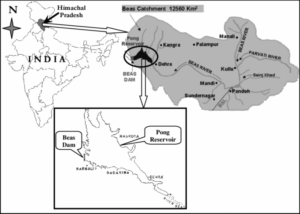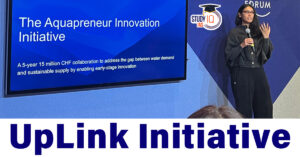Table of Contents
RBI ‘Trend and Progress of Banking in India’ report
Context: The RBI report, titled ‘Trend and Progress of Banking in India 2022-23’ released.
Key Finding Of the RBI Report
- Asset Quality Improvement: The gross non-performing asset (GNPA) ratio reached a new low over a decade by September-end, continuing a trend that began in 2018-19.
- By September 2023, the GNPA ratio for Scheduled Commercial Banks (SCBs) fell to 3.2%.
- Reduction in GNPAs: About 45% of the reduction in GNPAs of SCBs during 2022-23 was due to recoveries and upgrades.
- Sector-wise GNPA Trends: The agricultural sector recorded the highest GNPA ratio, while retail loans had the lowest.
- SCBs Balance Sheet Expansion: The consolidated balance sheet of SCBs grew by 12.2% in 2022-23, fueled by credit provided to the retail and services sectors.
- Capital to Risk Weighted Assets Ratio: As of September 2023, the CRAR of SCBs stood at 16.8%.
- Urban Co-operative Banks Growth: UCBs saw a 2.3% growth in their combined balance sheet in 2022-23, driven by loans and advances, with improvements in capital buffers and profitability.
- Balance Sheet Growth: Commercial banks’ consolidated balance sheet grew by 12.2% in 2022-23, the highest in nine years, driven by robust credit growth.
- Banking and NBFC Resilience: Both banking systems and non-banking financial companies (NBFCs) have shown resilience, backed by high capital ratios, improved asset quality, and strong earnings growth, contributing to double-digit credit growth and bolstering domestic economic activity.
- Reduction in Frauds: The total amount of frauds reported by banks in 2022-23 reached a six-year low.
- Governance and Risk Management: The RBI emphasises the importance of strengthening governance and risk management practices and building additional buffers.
- NBFC Growth: NBFCs experienced significant balance sheet growth in 2022-23, supported by double-digit credit growth.
- Monitoring Interconnectedness: There is a high level of interconnectedness between banks and non-banks, highlighting the strategic importance of NBFCs in the financial system.
- Exposure to NBFCs: Banks are advised to evaluate their exposure to NBFCs, and NBFCs should diversify their funding sources and reduce reliance on bank funding.
- Net Interest Income and Profitability: In 2022-23, higher net interest income and lower provisioning boosted the net interest margin (NIM) and profitability of banks.
We’re now on WhatsApp. Click to Join
Migration and Mobility Agreement
Context: The Union Cabinet has given its ex-post facto approval to the proposal of the Ministry of External Affairs to sign and ratify the Migration and Mobility Agreement between the Government of the Republic of India and the Government of the Italian Republic.
About the Migration and Mobility Agreement
| Category | Details |
| India-Italy Migration and Mobility Agreement Overview |
|
| Key Provisions of the Agreement |
|
MedTech Mitra
Context: Recently, the Union Minister of Health and Family Welfare launched the MedTech Mitra portal.
About The MedTech Mitra Portal
- This online resource is designed to support medtech innovators in areas like clinical assessment, regulatory guidance, and product adoption.
- It’s a joint effort between the Indian Council of Medical Research (ICMR) and the Central Drugs Standard Control Organisation (CDSCO), with oversight from NITI Aayog’s Atal Innovation Mission.
- The MedTech Mitra platform, in conjunction with recent policies for medical devices and the production-linked incentive scheme, aims to invigorate the medical devices industry and promote local manufacturing.
Key Benefits of MedTech Mitra
- Boosting Local MedTech Development: This initiative will spur the creation of affordable, high-quality MedTech devices and diagnostics in India, thereby reducing the sector’s reliance on imports.
- Simplifying Innovation for Startups: The platform will provide a more straightforward path for innovation and research & development, especially beneficial for emerging startups.
- Comprehensive Support for Startups: Offering comprehensive guidance, the platform will assist startups from the initial idea stage to the final product, including support in conducting animal and clinical trials.
- Encouraging Collaborative Efforts: It aims to cultivate collaborations among engineers, scientists, and clinicians, addressing a previously identified gap in the sector.
Pong Dam Eco-sensitive Zone
Context: The Union Ministry of Environment and Forest recently issued a draft notification declaring a one-kilometre area from the boundaries of the Pong Dam Wildlife Sanctuary in Kangra district as an eco-sensitive zone.
About the Pong Dam Lake Wildlife Sanctuary
- Location: Nestled in the Kangra district of Himachal Pradesh, commonly referred to as Pong Dam Reservoir or Pong Dam Lak
- Historical Timeline: The dam’s inception occurred in 1975, later designated as a wildlife sanctuary in 1983.
- Environmental Recognition: Acknowledged as a Ramsar Site in 2002, highlighting its ecological significance.
- Rivers:
- Primary: Beas River nourishes the lake.
- Supporting Tributaries: Enriched by streams like Gaj, Neogal, Binwa, Uhl, Bangana, and Baner, flowing perennially.

- Forest Cover: The surrounding sanctuary boasts tropical and subtropical forest types.
- Plant Life: Diverse flora includes species like Acacia, Jamun, Shisham, Mango, Mulberry, Ficus Kachnar, Amla, and Prunus.
- Wildlife Spectrum:
- Terrestrial Fauna: Hosts animals such as Sambhar, Barking Deer, Wild Bear, Nilgai, Clawless Otter, and Leopards.
- Aquatic Avifauna: Home to the Bar Headed Geese as its flagship species, alongside others like Eurasian Coot, Northern Pintail, Common Teal, Great Cormorant, GreyLag Goose.
Electronic soil (eSoil)
Context: Researchers introduced a ground-breaking study on “electronic soil” (eSoil) in hydroponics, offering the potential for sustainable urban agriculture and food security.
eSoil Overview
- Functionality: eSoil is a bioelectronic substrate that enhances plant growth by electrically stimulating the root system and the surrounding environment using low energy.
- Composition: Made from cellulose and PEDOT, a conductive polymer, it incorporates a mixed-ionic electronic conductor as its active material.
- Key Benefits:
-
- Eco-friendly nature.
- Safe alternative to high-voltage, non-degradable methods.
- Low energy usage, leads to reduced resource consumption.
Importance of eSoil
- Hydroponics Revolution: This innovation is pivotal for hydroponics, encouraging practices like vertical farming.
- Urban Agriculture Enhancement: Facilitates sustainable urban farming, contributing to food security in city environments.
- Sustainability: Its energy-efficient design supports the sustainable cultivation of crops, aligning with the increasing global food demand.


 GPS Spoofing and Its Impact in India: A ...
GPS Spoofing and Its Impact in India: A ...
 Amrit Gyaan Kosh Portal: A Comprehensive...
Amrit Gyaan Kosh Portal: A Comprehensive...
 UpLink Initiative: Launched by World Eco...
UpLink Initiative: Launched by World Eco...





















